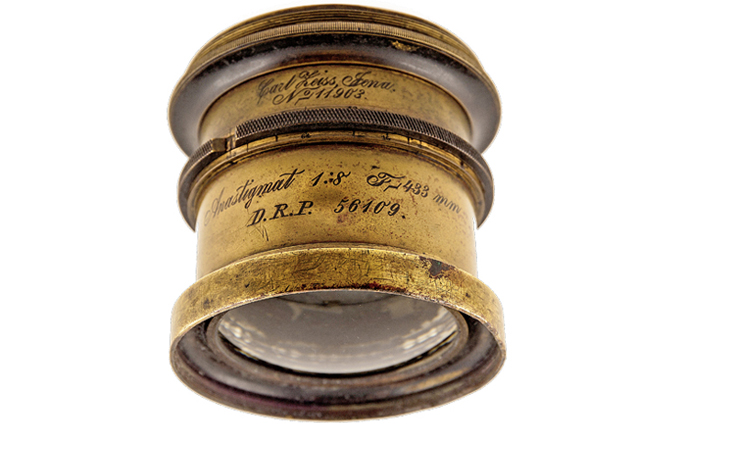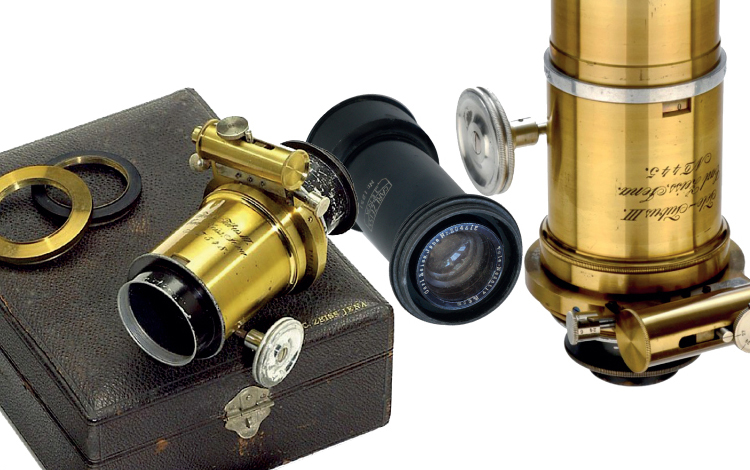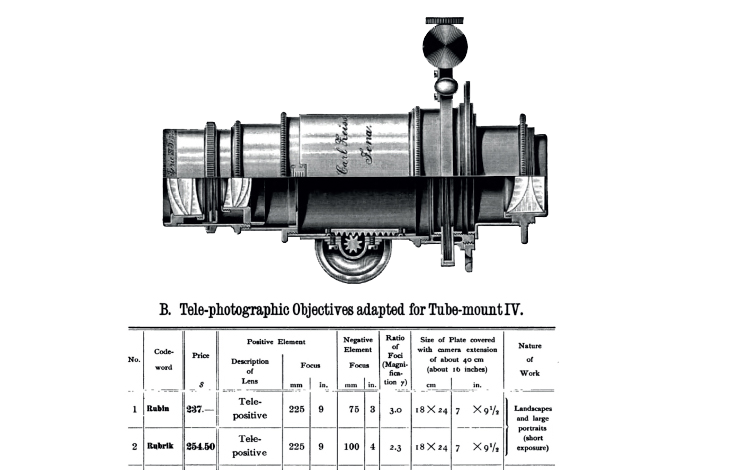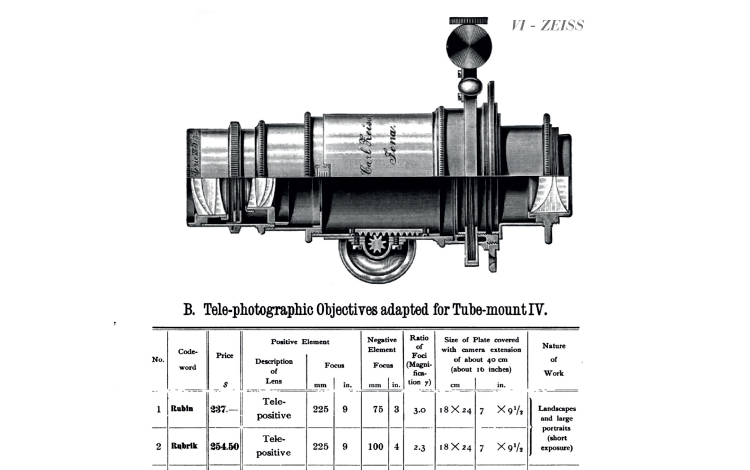A short excerpt from the sixth chapter: Zeiss
…after waiting further for Steinheil, Zeiss finally turned to Dr. Paul Rudolph (1858-1935) who had been one of Abbe's students when he had built his first photographic lens. It took Rudolph two years to design it and on April 3rd, 1890 Zeiss-Werke patented the "Anastigmat" (22). The lens was remarkably successful, with 100,000 pieces sold up to 1900. It was manufactured in various periods and in various models from the luminous f/4.5 Series I designed for portraiture to the slower super wide angle f/18 Series V. In the years following 1890 many manufacturers began making similar "anastigmatic" lenses and Zeiss, who had not copyrighted the name, had to change the name in 1900 to "Protar" (23). Along with construction of the anastigmats and the introduction of the telephoto lens in 1890, Zeiss also began producing various models of telephoto lenses and teleconverters (24). Along with his organizational duties Abbe never abandoned his studies and in 1893 patented double prism binoculars that improved the sense of depth. They were enormously successful and Zeiss produced almost 30,000 before the turn of the century (25).
On November 14, 1896 Zeiss patented Rudolph's design for the Planar. The lens was composed of two symmetrical groups each of which was based on a slight variation of Carl Friedrich Gauss's 1817 telescopes. For this reason the Planar and other lenses with similar symmetric designs became known as "double Gauss." The Planar was a large, heavy and costly lens, targeted for professionals. Zeiss needed to increase sales to the amateur market, so in 1899 the firm produced the Unar, a much lighter and cheaper lens (26). The success of the firm in the last decades of the 19th century was nothing less than fabulous. In 1871 employees numbered 25, in 1877 there were 36, 82 in 1880, 240 in 1890, 800 in 1896 and 923 in 1898. At the start of the century they exceeded 1,000 and by 1905 they reached almost 1,400 (27)…
On November 14, 1896 Zeiss patented Rudolph's design for the Planar. The lens was composed of two symmetrical groups each of which was based on a slight variation of Carl Friedrich Gauss's 1817 telescopes. For this reason the Planar and other lenses with similar symmetric designs became known as "double Gauss." The Planar was a large, heavy and costly lens, targeted for professionals. Zeiss needed to increase sales to the amateur market, so in 1899 the firm produced the Unar, a much lighter and cheaper lens (26). The success of the firm in the last decades of the 19th century was nothing less than fabulous. In 1871 employees numbered 25, in 1877 there were 36, 82 in 1880, 240 in 1890, 800 in 1896 and 923 in 1898. At the start of the century they exceeded 1,000 and by 1905 they reached almost 1,400 (27)…
Continue...
Footnotes:
(22) Patent n° 56109 of April 3rd, 1890. In Eder 1932 p. 408.
(23) Kingslake p. 82.
(24) The telephoto lenses and tube-mounts were not yet present in the 1891 Zeiss catalogue.
(25) The production of double-prism binoculars reached 2,260,000 pieces by the end of World War II.
(26) Auerbach p. 46.
(27) Kühn p.36 and Carl Zeiss 1921 75th Anniversary Postcard..










